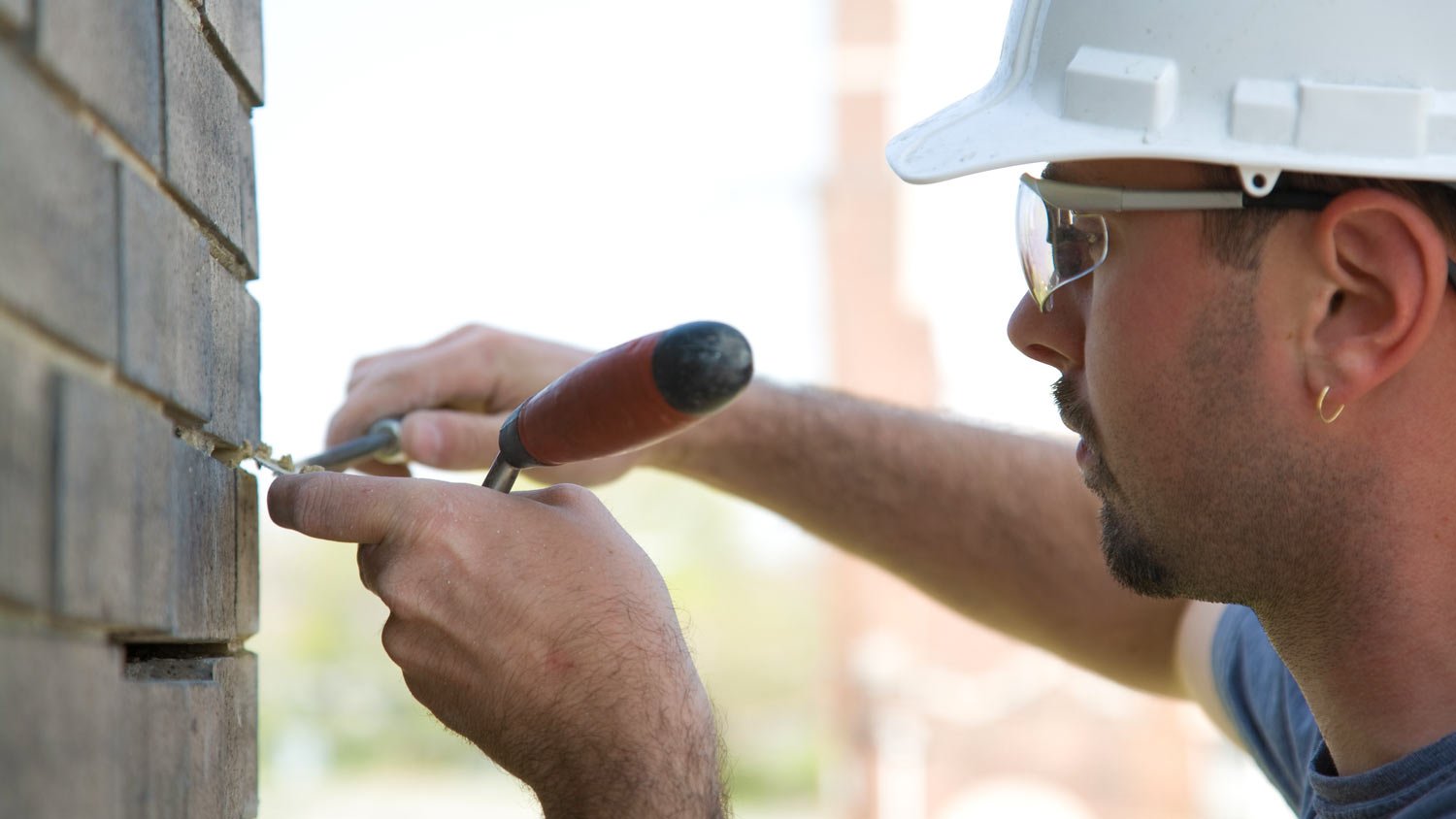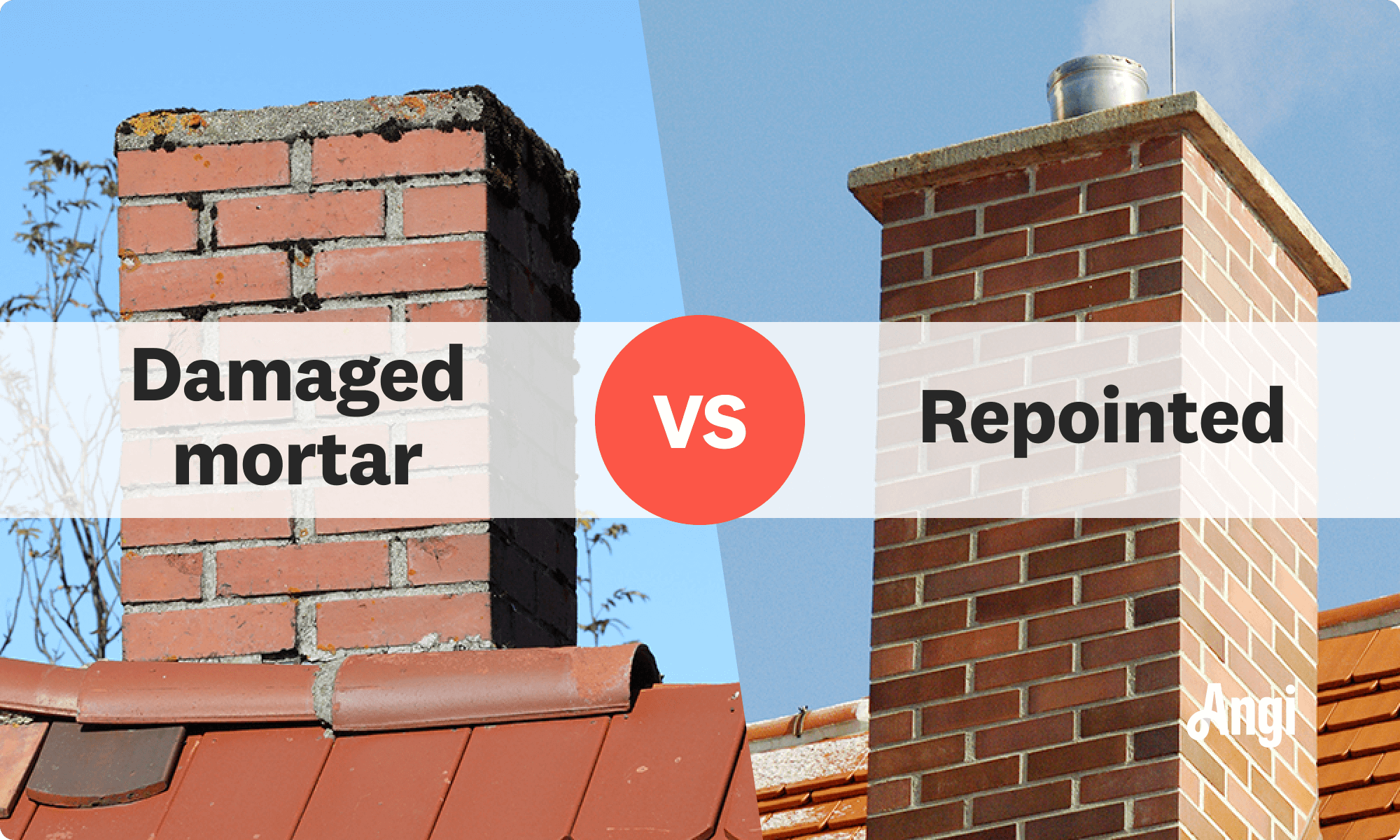
Your chimney inspection cost will vary based on the type of inspection, how accessible the chimney is, the chimney size, and the number of flues.
Out with the old mortar and in with the new


Repointing a chimney involves taking out deteriorated mortar and replacing it with new mortar to strengthen the chimney.
Repointing a chimney costs $4 to $25 per square foot.
Depending on how much damage is found during a chimney inspection, it can take several days to repoint a chimney.
If there is extensive damage, a pro might recommend to rebuild your chimney instead of repointing it.
Chimneys are made of brick and mortar for good reason: On the outside, they can withstand heavy storms and debris flying at high speeds. On the inside, they can withstand extremely high temperatures and smoke blowing up the smoke chamber. But masonry, even if well-built, breaks down over time. So, what is repointing a chimney? Repointing a chimney allows you to repair any damage to the brick and mortar.

Even if you keep up with chimney maintenance, brick and mortar will eventually wear down over time. You’ll notice cracks and crumbling once the mortar starts to wear down. And when this occurs, moisture can seep into the chimney and the structure can become unstable.
Repointing a chimney is done by removing any bricks or mortar that have cracks or are deteriorating. Here’s what you can expect when you schedule an appointment with a chimney repair specialist:
A pro will inspect the chimney to ensure it’s safe and structurally sound. They’ll also note where there is missing mortar.
Once they’ve inspected the chimney, they’ll start to chisel out any mortar joints that are deteriorating.
After removing the old mortar, the crew will wet the areas where they need to apply new mortar. They’ll then apply new mortar to the joints.
You may think tuckpointing is similar or interchangeable with repointing. However, repointing a chimney is a bit different from tuckpointing a chimney. Tuckpointing is a decorative job that involves dyeing the mortar so that it is similar to the brick and disguises the mortar in between bricks. Tuckpointing can only fix minor cracks in the mortar—it’s not meant to fix structural issues with the chimney. Because the process is more cosmetic, tuckpointing tends to be a more affordable option.
Repointing is a more complex process to strengthen the chimney. If done correctly, a repointing job will last many decades. It will also prevent water from entering your home and damaging the mortar during the freeze-thaw cycle.

There are a few signs that it’s time to consider repointing your chimney:
Visible cracks on the chimney
Flaking or crumbling mortar
Crumbling bricks (known as spalling)
Water stains on the outside of the chimney
Leaks on the inside of the chimney or firebox
Ignoring these signs may lead to more serious damage to your home or the structure of the chimney. So, its best to call a chimney repair professinoal to have an inspection. If there is extensive damage to your chimney, you may need to partially or fully rebuild it—which will be a more costlier project than repointing.
Depending on where you live and your weather conditions, you may need to wait for a warmer and dryer part of the year to repoint a chimney so that the mortar cures properly during repair.
A pro will always first inspect your chimney to assess the amount of damage and the appropriate fix. If there is severe deterioration and structural issues, a chimney repair specialist may recommend rebuilding the chimney. However, keep in mind that there are three types of rebuilds: partial, roofline up, and complete.
If a few layers of mortar and brick need full replacement—instead of repointing—you may need a partial rebuild. A pro will completely remove this section of the chimney and rebuild it.
A roofline up build is only necessary if part of the roof needs to be replaced along with the exterior portion of the chimney. A complete rebuild would include replacing the entire chimney. There would need to be extensive structural issues to warrant rebuilding it.
From average costs to expert advice, get all the answers you need to get your job done.

Your chimney inspection cost will vary based on the type of inspection, how accessible the chimney is, the chimney size, and the number of flues.

The average cost to repair or replace a chimney crown depends on the damage, material, and any other chimney maintenance services bundled into your project.

Chimney repair costs can vary by the type of chimney you have and the required repairs. Use this guide to help you estimate project costs.

Before you light that fire, learn how to open a chimney flue safely in three quick steps. We also share what to do if it needs to be fixed.

It protects your chimney from the elements, but what is a chimney crown, and how does it work? Learn more about this essential element of every chimney.

Parging a chimney’s smoke chamber is essential during installation or maintenance. We’ll explain what parging a chimney is and why and how it’s done.